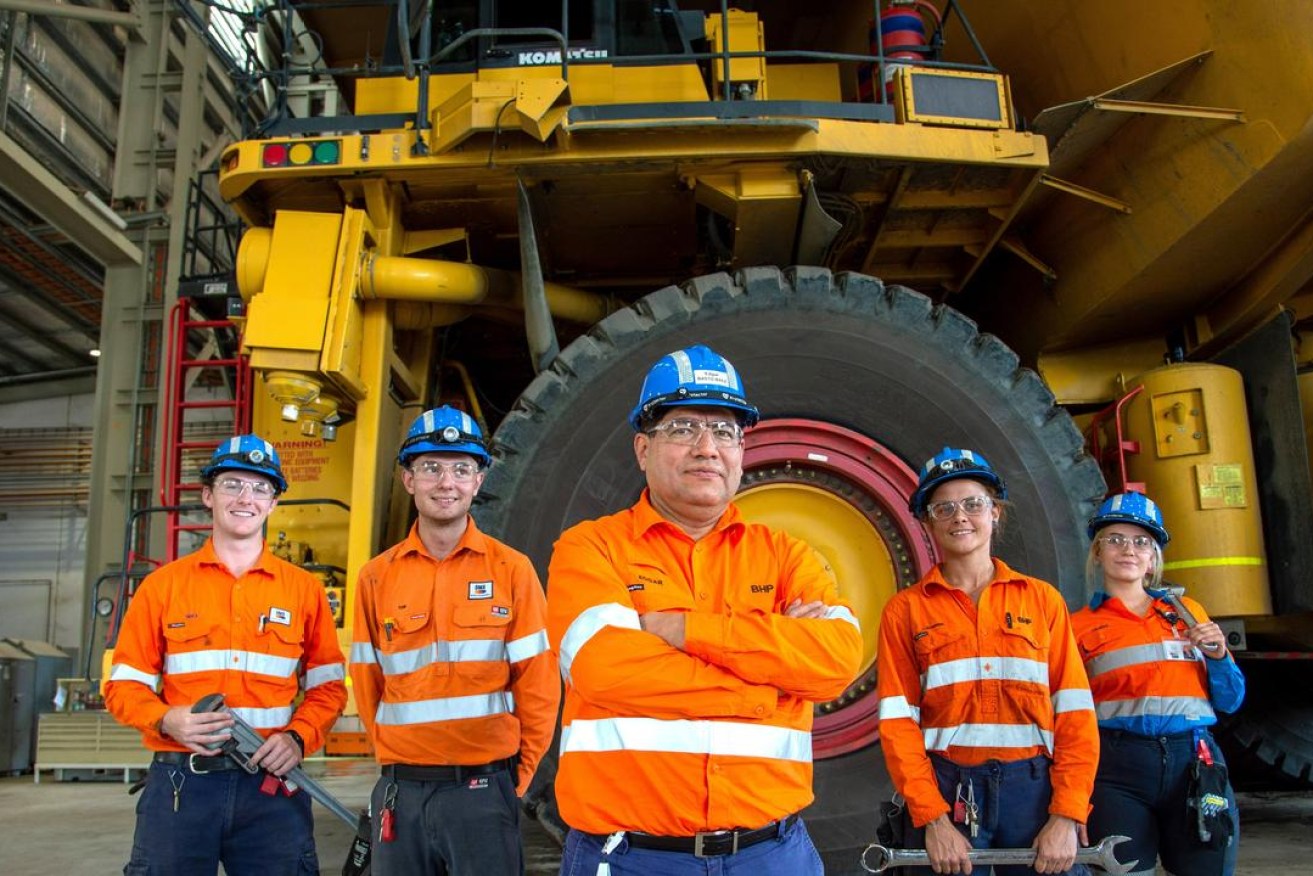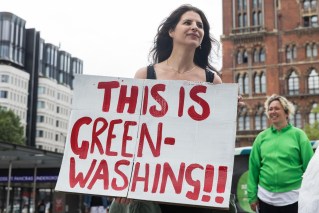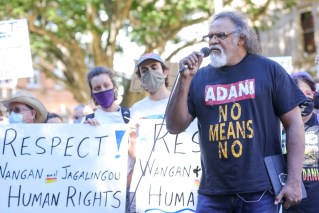Boom time: Mining industry has 1300 jobs on offer, most of them paying six figures
The mining industry faces a crippling labour shortage and a potential wages breakout as more than 1300 jobs remain unfilled in Queensland.


BHP minerals Australia president Edgar Basto with workers Photo: BHP).
The Queensland Resources Council said a survey of its members found that the skills gap was the number one threat to the future viability of Queensland’s resources sector.
The results of its quarterly survey published in the State Of The Sector report found that a combination of COVID-related border restrictions, fewer skilled migrants and interstate competition for workers had “created a perfect storm of labour shortages at a time of continued growth across the sector”.
While demand was strong now, executives also believed the demand for STEM graduates would grow over the next four years.
Although the report did not mention it, the industry’s environmental record and the associated activism against it has also played against attracting younger workers. The boom-bust nature of the sector has also been an issue in the past.
The report said mining companies were now concerned that the shortage could lead to a wages breakout.
“With coal prices high, there are more projects and operations ramping up and drawing on the talent pool making it more challenging to attract and retain,” one executive was quoted as saying in the survey.
“The coal sector is at the point in the cycle which always stretches resources and pushes up direct and indirect input costs.”
Environmental issues were also weighing heavily, particularly in coal where activism had, at times, targeted insurers of mines and the associated infrastructure, particularly in the case of the Carmichael coal mine.
“The uncertainty around climate change policies and geopolitical actions means that the market could be quite volatile,” one unnamed chief executive said.
“The ability to access capital and insurance is being severely impacted by lack of coherent positions on reliable energy sources from all levels of government. [This will] likely impact decision making on expansion/extension projects in our business.”
But the shortage of workers was also coinciding with a boom in the sector with prices for metallurgical coal at record highs. QRC chief executive Ian Macfarlane said the Minerals Council of Australia’s latest Commodity Demand Outlook 2030 report had forecast increased demand for key Queensland commodities out to 2030.
“This is supported by Queensland Treasury’s most recent forward estimates that show coal export volumes are predicted to rise by 23 per cent out to 2024-25,” Macfarlane said.
“Treasury is also anticipating a broadening of the resources sector due to increasing demand for Queensland’s critical minerals and rare earths used in the production of emerging technologies.”
Macfarlane said mining leaders have become increasingly concerned over the past 12 months about attracting and retaining enough skilled employees to support industry growth, with the issue jumping from number 12 on the list to number one in the latest CEO sentiment survey.
“The number of jobs in our sector in Queensland has increased by more than two-thirds over the past five years to reach a record high of almost 85,000 earlier this year,” he said.
“This growth in resources jobs, which has surged since Covid, is around six times the relative growth experienced across the rest of Queensland’s workforce over the same five-year period.
“Looking forward, jobs growth over the next five years is likely to continue due to increasing global demand for traditional resources like coal, base metals and gas plus the growing demand for new economy minerals such as cobalt, graphite, vanadium and rare earths which are being used to build everything from microchips to electric vehicles.
“This demand will create a growing and increasingly diverse pipeline of jobs for Queenslanders, with the National Skills Commission projecting employment in our sector will grow by a further 8 per cent to 2025.”
The QRC said the latest SEEK employment data, showed there were currently more than 1300 resources jobs on offer in Queensland, with over 70 percent paying upwards of $100,000 a year.
Macfarlane said mining CEOs identified as their second biggest concern the challenges associated with demonstrating a company’s social licence to operate, followed by problems dealing with uncertain or poor government regulation.












